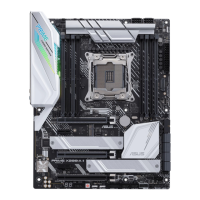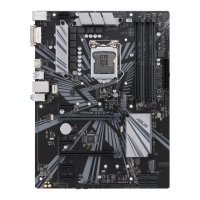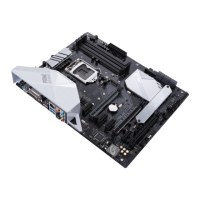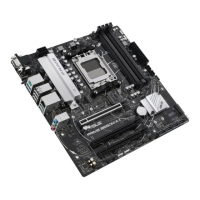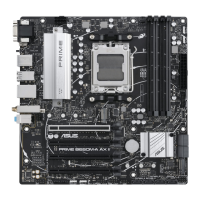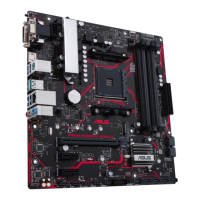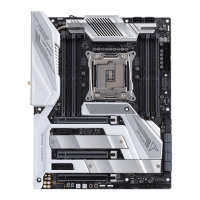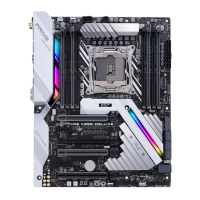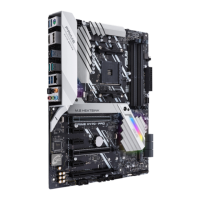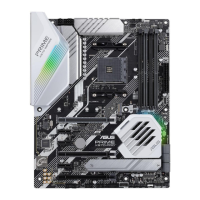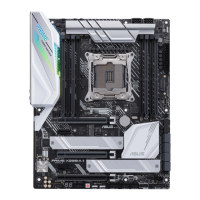
Do you have a question about the Asus Prime X299-A II and is the answer not in the manual?
| Chipset | Intel X299 |
|---|---|
| CPU Socket | LGA 2066 |
| Form Factor | ATX |
| Memory Slots | 8 x DIMM |
| Max Memory | 256GB |
| Memory Type | DDR4 |
| SATA 6Gb/s Ports | 8 |
| USB 3.2 Gen 2 Type-A Ports | 2 |
| USB 3.2 Gen 2 Type-C Ports | 1 |
| USB 3.2 Gen 1 Ports | 4 |
| USB 2.0 Ports | 4 |
| RAID Support | RAID 0, 1, 5, 10 |
| M.2 Slots | 2 x M.2 |
| Network | Intel I219-V Gigabit LAN |
| Audio | Realtek ALC S1220A 8-Channel High Definition Audio |
| PCIe Slots | 3 x PCIe 3.0 x16, 2 x PCIe 3.0 x1 |
Safety precautions before installing motherboard components or changing settings.
Diagram and list of motherboard components and their locations.
Instructions and precautions for installing the CPU into the LGA2066 socket.
Guide for installing DDR4 memory modules into DIMM slots.
Details on PCIe slot configurations and compatibility for different CPUs.
Description of the power button and RTC RAM clear jumper functionality.
Explanation of Q LEDs and Q-Code LED for system status and error codes.
Detailed descriptions of various internal connectors on the motherboard.
Steps for assembling the PC system, starting with motherboard installation.
Instructions for updating the motherboard BIOS using BIOS FlashBack™.
Details on rear panel I/O ports and audio connections.
Steps for powering on the system for the first time and POST process.
Introduction to the ASUS UEFI BIOS interface and its functions.
How to enter and navigate the BIOS setup program in EZ and Advanced modes.
Overview of the EZ Mode screen for basic system information and settings.
Detailed configuration options available in the Advanced Mode of the BIOS.
How to save and access favorite BIOS items for easy personalization.
Overview of the Main menu for system information, date, time, language, and security.
Settings for overclocking-related items, including CPU and memory.
Configuration settings for CPU and other system devices.
Settings for adjusting PCH PCIe speed and SATA configuration.
Options to configure onboard devices like HD Audio and LAN controller.
Options to manage and configure USB-related features and ports.
Displays system temperature, power status, and fan settings.
Settings for configuring system boot options and priorities.
Access to special functions like ASUS EZ Flash 3 and Secure Erase.
Options to load defaults, save or discard changes, and exit the BIOS.
Procedures for updating the motherboard BIOS using various utilities.
Overview of supported RAID levels (0, 1, 5, 10) and their definitions.
A table listing diagnostic Q-Codes and their descriptions for troubleshooting.
FCC compliance, regional notices, and environmental regulations.
Contact details for ASUS technical support and general inquiries.
